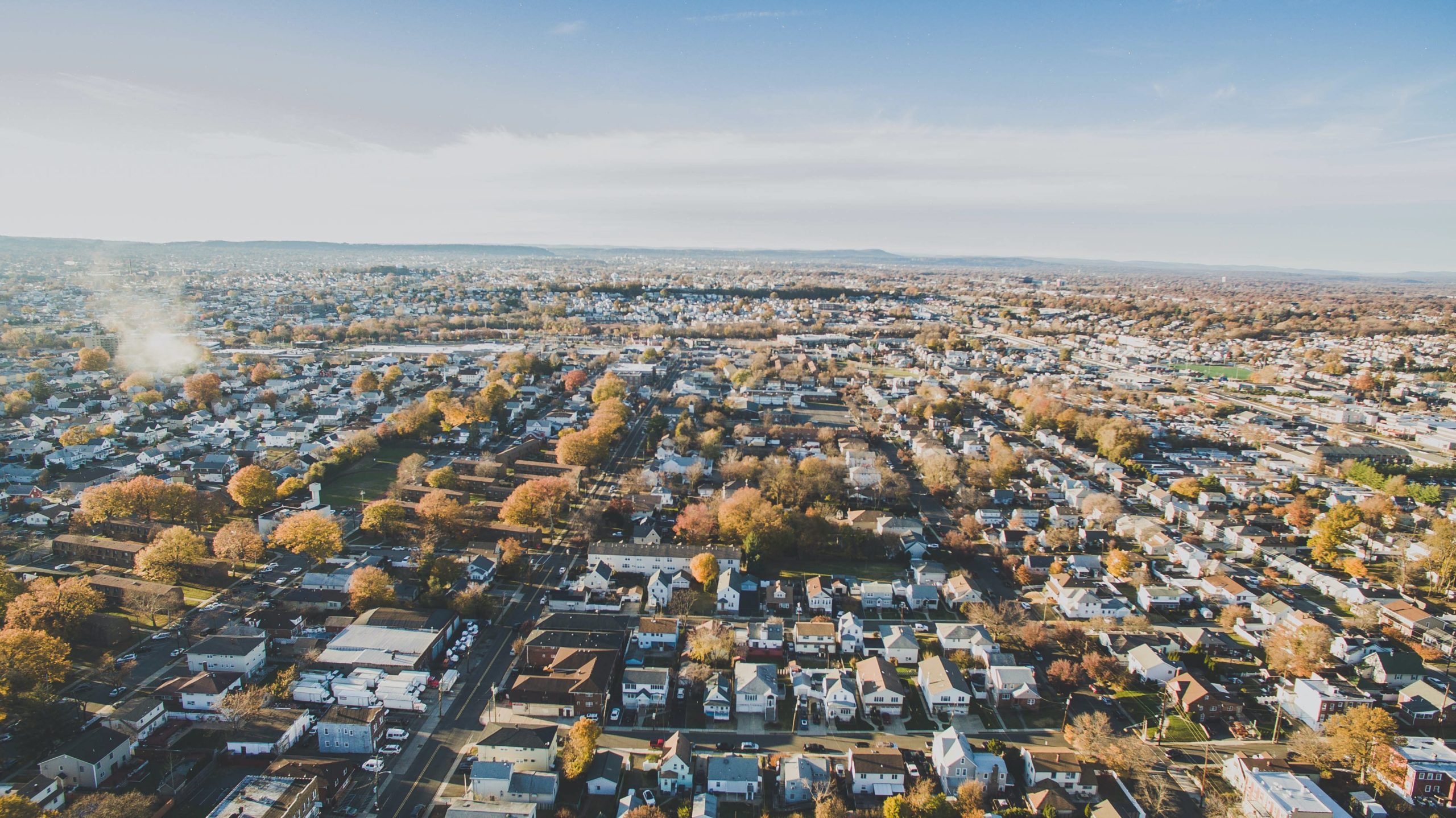The Economic Contributions of Hispanic Americans
Date: September 15, 2021

In celebration of Hispanic Heritage Month, we are partnering with UnidosUS, the nation’s largest Latino civil rights and advocacy organization, to highlight the contributions of Hispanic Americans to our society and economy.

To celebrate Hispanic Heritage Month, we take a look at the most recent data from the 2020 Census and the American Community Survey to shed more light on the economic impact of Hispanic Americans. In this update of our Power of the Purse series, we find that Hispanic households now collectively earn more than ever—to the sum of more than $1.2 trillion and paid almost $309 billion in taxes in 2019 alone—and remain one of the fastest growth segments of the U.S. population.
Critically for the U.S. economy, Hispanic Americans continue to fill critical workforce gaps in labor-short industries such as agriculture, hospitality, construction, and healthcare. In the wake of the coronavirus pandemic, these industries are now more critical than ever to economic vitality and health of the nation. The data also show that Hispanic immigrants continue to start and own their own businesses at higher rates than the rest of the population. Last, looking forward to what will likely be a hotly contested midterm election in 2022, we find that Hispanic eligible voters now make up considerable shares of the electorate, accounting for more than 1 in 5 eligible voters in several states.
Key Findings
This year, “The Power of the Purse: The Contributions of Hispanic Americans” finds:
- In 2020, there were more than 62 million Hispanic Americans in the United States, making up 18.7 percent of the U.S. population, making them the largest ethnic group in the country. Several states, including South Dakota, Vermont, and Louisiana saw significant increases in their Hispanic populations, all growing more than 67 percent between 2010 and 2020. In North Dakota, the Hispanic population more than doubled over the last decade, increasing by 148.1 percent from 13,500 to 33,400.
- Although now eclipsed by Asian Americans as the fastest growing segment of the U.S. population, Hispanics are still a fast-growing demographic. Between 2010 and 2020, the number of Hispanic Americans increased by 23.0%. In comparison, the United States overall grew by just 7.4 percent, and non-Hispanic Whites actually shrank by 2.6%.
- The growth among U.S.-born Hispanics has been particularly strong. U.S.-born Hispanics accounted for more than 90 percent of growth in the Hispanic population between 2010 and 2019. The number of U.S.-born Hispanics grew by 27.5 percent, from 31.9 million to 40.7 million in 2019.
- Hispanic households hold considerable earning and consumer power. In 2019, Hispanic households earned more than $1.2 trillion. This allowed them to pay $308.5 billion in taxes, including $196.5 billion in federal income taxes, as well as more than $112 billion in state and local taxes. After taxes, Hispanic households still held more than $910 billion in spending power.
- More recently arrived Hispanic immigrants are more highly educated than past cohorts of Hispanic immigrants. While only 13.7 percent of Hispanic immigrants hold at least a bachelor’s degree, 21.9 percent of Hispanic immigrants who arrived since 2014 do.
- Hispanic immigrants are significantly more likely to be entrepreneurs than the general U.S. population. More than 12 percent of all Hispanic immigrant workers worked for their own business, making them 30.6 percent more likely to have their own business than the overall U.S. population. There were more than 2.5 million Hispanic entrepreneurs in the United States in 2019.
- Hispanic workers make up significant shares of some of the most important industries in the U.S. economy. In agriculture and construction, Hispanics make up more than 3 in 10 workers. In hospitality and food service, almost 1 in 4 workers are Hispanic nationwide.
- Between 2010 and 2019 the number of eligible Hispanic voters increased by more than 8.2 million. In 2019, there were more than 29.8 million Hispanic eligible voters, a 39 percent increase from the 21.5 million Hispanic eligible voters there were in 2010. The number of U.S.-born eligible voters in particular grew from 16.1 million in 2010 to 22.3 million, an increase of more than 6.1 million people.
- In some states, Hispanics are capable of wielding considerable electoral power. While nationwide, Hispanic Americans now make up 13.1 percent of eligible voters and increase from 12.5 percent just 2 years ago. In some states they make up an even more significant share of the electorate. In New Mexico, 43.7 percent of all eligible voters are Hispanic. They make up 30.1 percent and 30.0 percent of eligible voters in Texas and California, respectively, and almost 1 in 4 eligible voters in Arizona.
Population Growth
Population Change for Selected Groups and Overall U.S. Population, 2010-2020
| 2010 | 2020 | Change, 2010-2020 | Rate of Change, 2010-2020 | |
|---|---|---|---|---|
| Total U.S. Population | 308,745,536 | 331,449,280 | 22,703,744 | 7.4% |
| Hispanic | 50,477,592 | 62,080,044 | 11,602,452 | 23.0% |
| Non-Hispanic White | 196,817,552 | 191,697,648 | -5,119,904 | -2.6% |
| Black, Non-Hispanic | 37,685,848 | 39,940,336 | 2,254,488 | 6.0% |
| Asian, Non-Hispanic | 14,465,124 | 19,618,720 | 5,153,596 | 35.6% |
In 2020, there were more than 62 million Hispanic Americans in the United States, making up 18.7 percent of the U.S. population, making them the largest ethnic group in the country. Although now eclipsed by Asians as the fastest growing segment of the U.S. population, Hispanics are still a fast-growing demographic. Between 2010 and 2020, the number of Hispanic Americans increased by 23.0%, or 12 million. In comparison, the United States overall grew by just 7.4 percent, and the number of non-Hispanic Whites shrank by 2.6 percent.
Top 10 States with Largest Increases in Hispanic Population, 2010-2020
| State | Hispanic Population, 2020 | Hispanic Population, 2020 | New Hispanic Residents, 2010-2020 |
|---|---|---|---|
| Texas | 9,460,921 | 11,441,717 | 1,980,796 |
| California | 14,013,719 | 15,579,652 | 1,565,933 |
| Florida | 4,223,806 | 5,697,240 | 1,473,434 |
| New York | 3,416,922 | 3,948,032 | 531,110 |
| New Jersey | 1,555,144 | 2,002,575 | 447,431 |
| Pennsylvania | 719,660 | 1,049,615 | 329,955 |
| North Carolina | 800,120 | 1,118,596 | 318,476 |
| Illinois | 2,027,578 | 2,337,410 | 309,832 |
| Washington | 755,790 | 1,059,213 | 303,423 |
| Arizona | 1,895,149 | 2,192,253 | 297,104 |
Some states saw particularly large increases in the number of new Hispanic residents between 2010 and 2020. Texas, California, and Florida, states that already boasted large Hispanic populations, saw their Hispanic populations increase by at least 1.4 million. In Texas, there were almost 2 million new Hispanic residents alone between 2010 and 2020.
Top 10 States with Fastest Growth in Hispanic Population, 2010-2020
| State | Hispanic Population Growth Rate | Hispanic Population, 2010 | Hispanic Population, 2020 |
|---|---|---|---|
| North Dakota | 148.1% | 13,467 | 33,412 |
| South Dakota | 75.1% | 22,119 | 38,741 |
| Vermont | 68.4% | 9,208 | 15,504 |
| Louisiana | 67.5% | 192,560 | 322,549 |
| Tennessee | 65.2% | 290,059 | 479,187 |
| New Hampshire | 62.0% | 36,704 | 59,454 |
| Montana | 58.2% | 28,565 | 45,199 |
| Maine | 57.1% | 16,935 | 26,609 |
| Kentucky | 56.5% | 132,836 | 207,854 |
| West Virginia | 56.4% | 22,268 | 34,827 |
Perhaps more interestingly, there were several states that are emerging as new destinations for Hispanic Americans, including South Dakota, Vermont, and Louisiana. All these states saw significant increases in their Hispanic populations, each growing more than 67 percent between 2010 and 2020. In North Dakota, the state with the fastest growing Hispanic population in the country, the number of Hispanic residents more than doubled between 2010 and 2020, increasing by 148.1 percent from 13,500 to 33,400.
Spotlight on Hispanic Immigrants
Hispanic Population by Nativity, 2010 to 2019
| Population | 2019 | 2010 | Share of Hispanics, 2019 | Share of Hispanics, 2010 | Growth Rate, 2010-2020 |
|---|---|---|---|---|---|
| U.S.-Born Hispanics | 40,695,926 | 31,912,465 | 67.3% | 62.9% | 27.5% |
| Foreign-Born Hispanics | 19,788,851 | 18,817,105 | 32.7% | 37.1% | 5.2% |
Similar to Asian Americans, growth among U.S.-born Hispanics is accounts for the lion’s share of growth among all Hispanics in the United States. With immigration from Latin American countries falling from their peak numbers in the early 2000s, U.S.-born Hispanics accounted for more than 90 percent of growth in the overall Hispanic population between 2010 and 2020. Already, U.S.-born Hispanics make up more than two-thirds of all Hispanics in the United States and their share of the Hispanic population is expected to continue to increase.
Top States by Hispanic Immigrant Population, 2019
| State | Hispanic Immigrant Population | Total Population | Share of Population, Hispanic Immigrant |
|---|---|---|---|
| California | 5,128,151 | 39,512,224 | 13.0% |
| Florida | 2,645,346 | 21,477,736 | 12.3% |
| Texas | 3,178,956 | 28,995,880 | 11.0% |
| Nevada | 324,993 | 3,080,156 | 10.6% |
| New Jersey | 790,828 | 8,882,190 | 8.9% |
| Arizona | 578,659 | 7,278,717 | 8.0% |
| New York | 1,370,306 | 19,453,560 | 7.0% |
| New Mexico | 144,417 | 2,096,829 | 6.9% |
| Illinois | 725,786 | 12,671,821 | 5.7% |
| Rhode Island | 59,080 | 1,059,361 | 5.6% |
Labor Force Characteristics and Workforce Contributions
Given that Hispanics are more likely to be younger and of working age, Hispanics, both U.S.-born and immigrant, have a higher labor force participation rate than the overall U.S. average. In 2019, while U.S.-born Hispanics had a slightly lower employment rate than the U.S. average, Hispanic immigrants were more likely to be employed and working.
Educational Attainment (Age 25+)
| Education Level | All Hispanics | Hispanic Immigrants | Recent Hispanic Immigrants | U.S. Average |
|---|---|---|---|---|
| Below high-school diploma | 29.5% | 43.0% | 17.2% | 11.4% |
| High-school or some college | 52.9% | 43.3% | 60.9% | 55.5% |
| Bachelor’s degree | 12.0% | 9.3% | 15.0% | 20.4% |
| Advanced degree | 5.6% | 4.4% | 6.9% | 12.8% |
More recently arrived Hispanic immigrants are more highly educated than past cohorts of Hispanic immigrants. This mirrors the general trend among more recently arriving immigrants being better educated than their predecessors. To compare, while only 13.7 percent of Hispanic immigrants hold at least a bachelor’s degree, 21.9 percent of Hispanic immigrants who arrived since 2014 do. This however is still below the overall U.S. average for college attendance.
Hispanic workers make up significant shares of some of the most important industries in the U.S. economy. In agriculture and construction, Hispanics make up more than 3 in 10 workers. In hospitality and food service, almost 1 in 4 workers are Hispanic nationwide. In many of these industries, Hispanic immigrants in particular play a vital role. For example, in agriculture, Hispanic immigrants make up almost 1 in 4 workers and within specific industries within agriculture such as crop production, Hispanic immigrants are even more prevalent.
Hispanic immigrants are significantly more likely to be entrepreneurs than the general U.S. population. More than 12 percent of all Hispanic immigrant workers worked for their own business, making them 30.6 percent more likely to have their own business than the overall U.S. population. There were more than 2.5 million Hispanic entrepreneurs in the United States in 2019.
Income, Taxes, and Spending Power
Hispanic households hold considerable earning and consumer power. In 2019, Hispanic households earned more than $1.2 trillion. This allowed them to pay $308.5 billion in taxes, including $196.5 billion in federal income taxes, as well as more than $112 billion in state and local taxes. After taxes, Hispanic households still held more than $910 billion in spending power.
| Household Income | Total Taxes Paid | Federal Income Tax | State and Local Taxes | Spending Power | |
|---|---|---|---|---|---|
| U.S.-Born Hispanics | $675.6 Billion | $177.4 Billion | $115.5 Billion | $61.9 Billion | $498.2 Billion |
| Immigrant Hispanics | $543.1 Billion | $131.1 Billion | $80.9 Billion | $50.1 Billion | $412.0 Billion |
| All Hispanics | $1.2 Trillion | $308.5 Billion | $196.5 Billion | $112.0 Billion | $910.2 Billion |
Hispanic Voting Power
Between 2010 and 2019 the number of eligible Hispanic voters increased by more than 8.2 million. In 2019, there were more than 29.8 million Hispanic eligible voters, a 39 percent increase from the 21.5 million Hispanic eligible voters there were in 2010. The number of U.S.-born eligible voters in particular grew from 16.1 million in 2010 to 22.3 million, an increase of more than 6.1 million people.
Hispanic and Hispanic Immigrant Voters in the 10 States with Largest Hispanic Populations
| State | Hispanic Eligible Voters | Hispanic Immigrant Eligible Voters | Share of Electorate, Hispanic | Share of Electorate, Hispanic Immigrant |
|---|---|---|---|---|
| Texas | 5,694,272 | 960,478 | 31.1% | 5.2% |
| California | 7,833,494 | 2,035,967 | 31.0% | 8.1% |
| Arizona | 1,193,064 | 209,060 | 23.9% | 4.2% |
| Florida | 3,159,159 | 1,388,875 | 20.9% | 9.2% |
| New Jersey | 928,542 | 370,695 | 15.5% | 6.2% |
| New York | 2,018,340 | 641,123 | 15.2% | 4.8% |
| Illinois | 1,081,799 | 295,774 | 12.3% | 3.4% |
| Virginia | 337,504 | 119,208 | 5.6% | 2.0% |
| Georgia | 365,145 | 96,856 | 5.0% | 1.3% |
| North Carolina | 341,357 | 93,948 | 4.6% | 1.3% |
In some states, Hispanics are capable of wielding considerable electoral power. While nationwide, Hispanic Americans now make up 13.1 percent of eligible voters and increase from 12.5 percent just 2 years ago. In some states they make up an even more significant share of the electorate. In New Mexico, 43.7 percent of all eligible voters are Hispanic. They make up 30.1 percent and 30.0 percent of eligible voters in Texas and California, respectively, and almost 1 in 4 eligible voters in Arizona.
States Where More than 10% of the Electorate is Hispanic
| State | Hispanic Eligible Voters | Total Eligible Voters | Share of Electorate, Hispanic |
|---|---|---|---|
| New Mexico | 647,735 | 1,482,775 | 43.7% |
| Texas | 5,694,272 | 18,317,671 | 31.1% |
| California | 7,833,494 | 25,284,587 | 31.0% |
| Arizona | 1,193,064 | 4,989,622 | 23.9% |
| Florida | 3,159,159 | 15,094,795 | 20.9% |
| Nevada | 414,617 | 2,069,652 | 20.0% |
| Colorado | 676,418 | 4,134,544 | 16.4% |
| New Jersey | 928,542 | 5,999,372 | 15.5% |
| New York | 2,018,340 | 13,291,343 | 15.2% |
| Connecticut | 314,614 | 2,512,270 | 12.5% |
| Illinois | 1,081,799 | 8,805,576 | 12.3% |
| Rhode Island | 89,566 | 764,295 | 11.7% |






